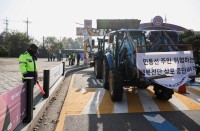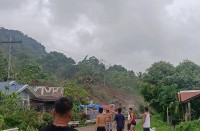
Residents living near a South Korean golf course on February 28 sued to stop it from becoming the site of a controversial US missile system loathed by Beijing, their lawyers said. / AFP PHOTO /
WASHINGTON, United States (AFP) — The United States military has begun deploying an antiballistic missile defense system to South Korea, following a string of missile tests by North Korea, the US Pacific Command said Monday.
The announcement came after nuclear-armed North Korea on Monday launched four missiles which it said was part of training for a strike on US bases in Japan. Three of the missiles came down provocatively close to Japan.
Deployment of the Terminal High Altitude Area Defense (THAAD) system “contributes to a layered missile defense system and enhances the US-ROK Alliance’s defense against North Korean missile threats,” the Pacific Command said in a statement.
“North Korea’s accelerating program of nuclear weapons tests and ballistic missile launches constitute a threat to international peace and security, and are in violation of multiple United Nations Security Council resolutions,” it said.
South Korea and the US agreed last year to install the THAAD system, which China has repeatedly denounced as a threat to its security.
The statement from the Pacific Command, which oversees US military operations in the Asia-Pacific, pointed out that the system is “a strictly defensive capability and it poses no threat to other countries in the region.”
The system is meant to intercept and destroy short and medium-range ballistic missiles during their final phase of flight.








